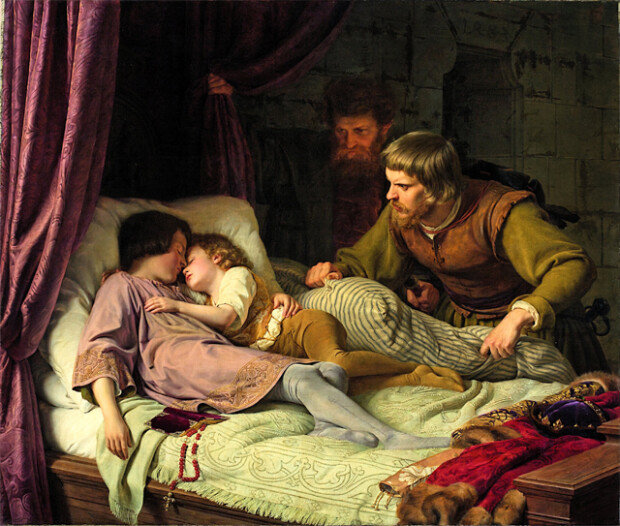The death of two young brothers
The death of two young brothers
Posted September. 17, 2020 07:49,
Updated September. 17, 2020 07:49

Two young brothers are fast asleep in the dark night. The older brother appears young, but he hugs his brother protectively like his mother. Beside them are the Bible and a red rosary, likely to be used by the brothers before they fell asleep. Two men are looking down at the brothers and one of them has a large pillow in his hand. Who are these children and what is happening to them?
Theodore Hildebrandt was a German painter known for his paintings with literature and history based themes. This painting, which is one of his most well-known, is a scene from Richard the Third, the play by Shakespeare. The children are the two sons of Edward the Fourth. The eldest son, Edward the Fifth, was crowned when his father passed away unexpectedly, but he becomes prisoned with this younger brother at the Tower of London. It was their uncle, Richard the Third, who had locked his nephews up and seized the throne. The brothers had been killed shortly after they were prisoned by an assassin sent by the uncle.
The painter had captured the scene right before the children’s death, expressed more dramatically in the picture by imagination. The brothers had been twelve and nine years old at that time, but the artist painted them to look younger to get more sympathy. The Bible and the rosary show how the boys had spent each night to overcome their fear and anxiety of death. Edward the fifth had been known for his piety, morality and academic excellence. Had the killers felt guilty when they saw the angelic children asleep? They appear slightly hesitant, but they couldn’t have violated the king’s orders.
What happened to Richard the Third, sacrificing his nephews to steal the throne? At first he won support from the people and the nobles but he was overthrown by rebels and the betrayal of his own army in just two years. He was an example of how even absolute power can lose supporters and eventually collapse in moral deformity.







